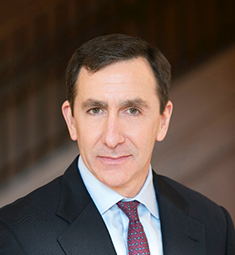Mixing a successful cocktail of change
For Professor Roger Hallowell, implementing change in organisations ranks among the greatest challenges leaders face, despite there being no lack of advice from business gurus and scholars on this topic. Every few years a new approach to change becomes fashionable only to disappoint many of the leadership teams embracing it. Unfortunately, there seems to be no straightforward method.

However, what does exist is a set of core considerations every leader must have in mind. Leaders need to adopt a new approach to change that relies on combining best-practice frameworks, mixed in the right proportion for the particular challenge that their particular organization, with its particular individuals, faces.
Navigating change may be somewhat like mixing a cocktail. Different people like different cocktails mixed in different ways at different times. However, there are some core ingredients that any well-stocked bar contains. Leaders must decide which ingredients of change are most appropriate for their organization, in what measure, and whether these should be shaken or stirred.
The seven core ingredients include several world-class frameworks that I cannot take credit for. The recipe for the Cocktail of Change can be found below.
1) An understanding
Leaders need to have their fingers on the pulse and must be aware of where individuals and groups integral to the change are in their emotional acceptance of the change, and their subsequent behavior, if they are to successfully coach them through the change.
2) A process of change
Leadership often spends 90% of time and resources on defining the “What” aspect of change. However, if change is to succeed, at least as much attention needs to be paid to the “How” - developing a process of change. Excellent generic processes of change stress the importance of creating urgency, in part by prompting leaders to explain the “why” of a change in an emotionally (and rationally) compelling way to staff.
3) Identifying the WIIFM (What’s In It For Me)
Leaders should conduct an analysis of the proposed “What” of change for each of the key individuals and groups affected by the proposed change - those who may otherwise see themselves as the “victims” of change. Remember that most people are comfortable in their routines and the situations they know, which change disrupts. The WIIFM of the proposed change must be greater than the pain of change in order to get these individuals and groups on board.
The WIIFM must also be greater than these individual’s and group’s best alternative to a negotiated agreement (BATNA), which includes saying yes and doing nothing, or worse, saying yes and fighting the change. Frameworks which help leaders understand change from the perspectives of their followers, can aid in developing a WIIFM analysis.
4) A style of change
This can be thought of as a flavour for the “How” of change. Keeping consistency between the culture of an organization and a style of change gives comfort and can ease a transition by blending old and new. However, when radical change is required inconsistency can be used to “shake up” an organization. Whichever route you choose, the reasons for doing so must be clearly explained to staff, in line with the above.
5) Acknowledging that the good old days of indentured servitude are over
Leaders must be aware that, despite their position, asking for change is a request. Every request involves a negotiation. Remember, the vast majority of these negotiations have the potential to be “win-win”, if communicated properly.
Ingredients six and seven are simple to describe, but difficult to accomplish. For best results, they should be included in equal measure.
6) Discipline
This is required to make difficult choices, especially regarding staff. At some point in a change process individuals are either “on, or off, the bus” and their choices must have ramifications. Leaders often become isolated and thus unable to assess the sincerity of important individuals and groups. Avoiding isolation by relying on trusted counsel may be the best advice.
7) Genuine concern for others
Your staff and their roles in the organisation’s long-term success, demonstrated in both words and actions. This requires leadership to have built trust with the individuals in the organization requiring time and effort.

Roger Hallowell
Those of us who study change and advise organizations on our findings may have done leaders a disservice by looking for - and repeatedly claiming to have found - it’s Holy Grail. Perhaps we would be wiser to provide some fundamental ingredients and then acknowledge that, at best we can help leaders to determine the right questions to ask, knowing that those leaders and the individuals in their organizations are best placed to develop the answers - to mix their own cocktail of change, to be shaken or stirred at their discretion.
Roger Hallowell is the Academic Director of programs for managers and executives in the fields of strategy, business policy and leadership, and is Academic Director of "Leading Strategies for Outstanding Performance" for HEC Paris Executive Education.